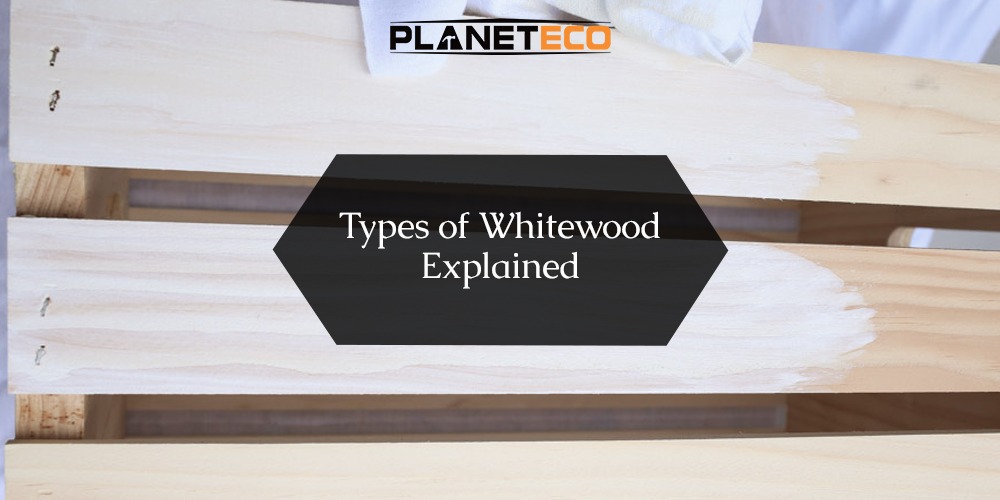Planeteco, a trusted UAE brand, proudly offers high-quality white wood solutions ideal for construction and creative DIY projects across the Emirates. Whitewood is one of those terms you’ve probably heard launched around in hardware stores or home improvement guides. But what exactly is it? Is it a specific species or just a general nickname? Let’s clear the sawdust and get into the grain of it.
What Is White Wood?
Whitewood isn’t a single species. It’s a general term used in the timber world to tell light-coloured softwood types such as spruce, pine, and fir. It’s often used to refer to affordable, easily available wood that works well for both construction and DIY projects. At Planeteco UAE, we help our customers choose the best white wood types based on purpose and budget.
Common Uses of White Wood
From framing walls and making furniture to building shelves and crafting decorative frames, white wood is a go-to material for a wide range of tasks. Its affordability and workability make it especially attractive for beginners and professionals alike, something Planeteco always supports with expert advice and eco-friendly supply options.
Major Types of White Wood
Let’s break down the most common types of white wood so you’ll know exactly what you’re dealing with on your next project.
Spruce
Characteristics
Spruce is lightweight and relatively strong for its weight. It has a fine, even grain and a pale yellowish-white tone.
Common Applications
Used extensively in construction for wall studs, joists, and even soundboards in musical instruments.
Fir
Strengths and Weaknesses
Fir is slightly more reddish than other white woods, but it’s still in the family. It’s known for its straight grain and dimensional stability, although it’s a bit harder to stain.
Best Use Cases
Ideal for structural lumber and projects where strength matters more than appearance.
Pine
Types of Pine
There are several types: Eastern White Pine (soft and easy to carve), Western White Pine (light with straight grain), and Southern Yellow Pine (denser and more resinous).
Why Pine is Popular
It’s a DIY favourite thanks to its low cost, availability, and ease of use.
Popular
Appearance and Texture
Often mistaken for hardwood, poplar has a creamy white colour with greenish or brown streaks and a fine, uniform texture.
Best Applications for Poplar
Great for painted furniture, trim, and cabinetry. Not ideal for outdoor use.
Maple
Hard Maple vs. Soft Maple
Hard maple is denser and used for flooring and butcher blocks. Soft maple is easier to work with and more common in DIY applications.
Use in Furniture Making
Preferred for its smooth finish and light, natural tone—perfect for modern and minimalist designs.
How to Identify Different Types of White Wood
Colour Variations
Pine is usually the lightest, with poplar showing occasional green or brown streaks. Fir leans slightly pinkish.
Grain and Texture Differences
Spruce and pine have a more noticeable grain, while poplar and maple offer finer textures.
Weight and Density Clues
Maple and Southern Yellow Pine feel noticeably heavier than spruce or Eastern White Pine.
White Wood in Construction vs. Furniture
Structural Uses in Framing and Panels
SPF (Spruce-Pine-Fir) combinations are common in framing because they hit the perfect
balance between weight and strength.
Aesthetic Uses in Decor and Furniture
Maple and poplar shine when aesthetics are key, especially in visible furniture pieces or trim work.
Advantages of Using White Wood
Workability and Finish
Whitewoods are typically soft, making them easy to cut, sand, and shape.
Cost-Effectiveness
They’re often the most budget-friendly option at the lumber yard.
Sustainability
At Planeteco UAE, we prioritize sourcing white wood from sustainable forests, ensuring eco-friendly options for every customer.
Limitations of White Wood
Durability Concerns
Being softwoods, they dent and scratch more easily than hardwoods.
Susceptibility to Rot or Insects
Without proper sealing or treatment, white wood can fall victim to the elements.
White Wood vs. Other Softwoods
White Wood vs. Cedar
Cedar is naturally rot-resistant and aromatic but far more expensive.
White Wood vs. Redwood
Redwood is stronger and longer-lasting, but again, it comes at a price premium.
Treated vs. Untreated White Wood
When to Use Treated White Wood
Use it for outdoor projects like decking, fences, or raised garden beds.
Indoor vs. Outdoor Suitability
Untreated white wood is best for indoor use or projects that won’t be exposed to moisture.
How to Maintain White Wood
Sealing and Painting Tips
Always sand before sealing or painting. Use a primer for better paint adhesion.
Avoiding Moisture Damage
Keep white wood dry and properly sealed to extend its life.
Is White Wood Good for DIY Projects?
Beginner Friendly Aspects
Absolutely! Easy to handle, widely available, and forgiving if you make a mistake.
What to Avoid as a DIYer
Avoid using white wood in moisture-prone areas unless it’s pressure-treated.
White Wood Grades and Quality
Grading Standards
Lumber is typically graded for appearance (Select, #1, #2, etc.) and structural quality.
What to Look for When Buying
Fewer knots, straighter boards, and a consistent colour are usually signs of better quality.
Where to Buy White Wood
Local Lumber Yards vs. Home Improvement Stores
Lumber yards may offer better quality, but big-box stores are more convenient.
Online Sources
You can also shop white wood online at trusted suppliers like Planeteco, where quality meets sustainability in the UAE market.
Conclusion
Whitewood is a versatile, affordable, and easy-to-work-with option for everything from framing
houses to crafting custom furniture. Understanding the different types of spruce, pine, fir, poplar, and maple helps you pick the right wood for your project and ensures lasting results. Whether you’re a DIY rookie or a seasoned woodworker, Planeteco UAE is your partner in quality lumber solutions for both functionality and style.

